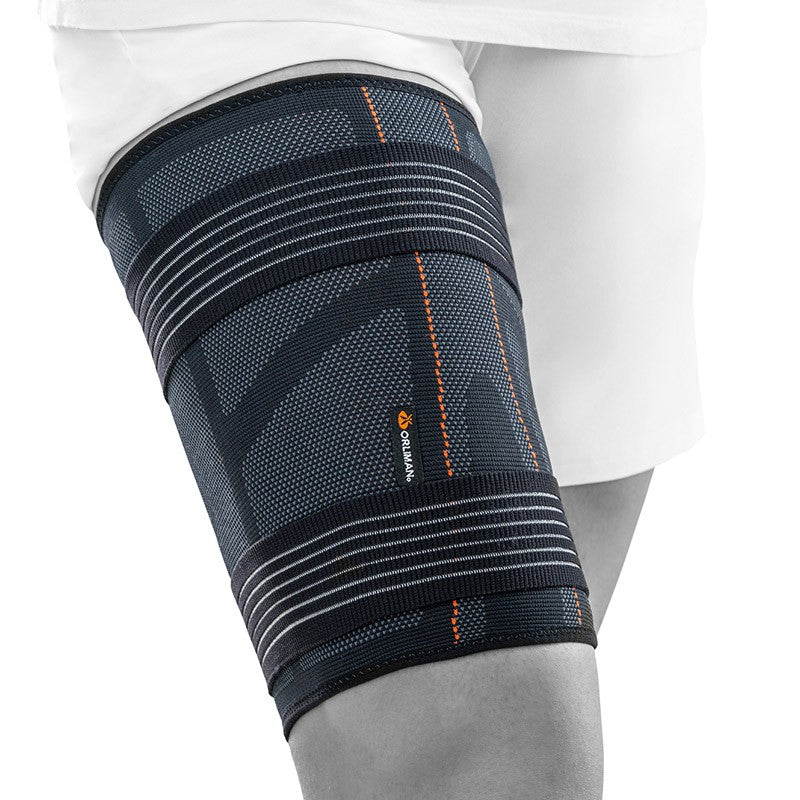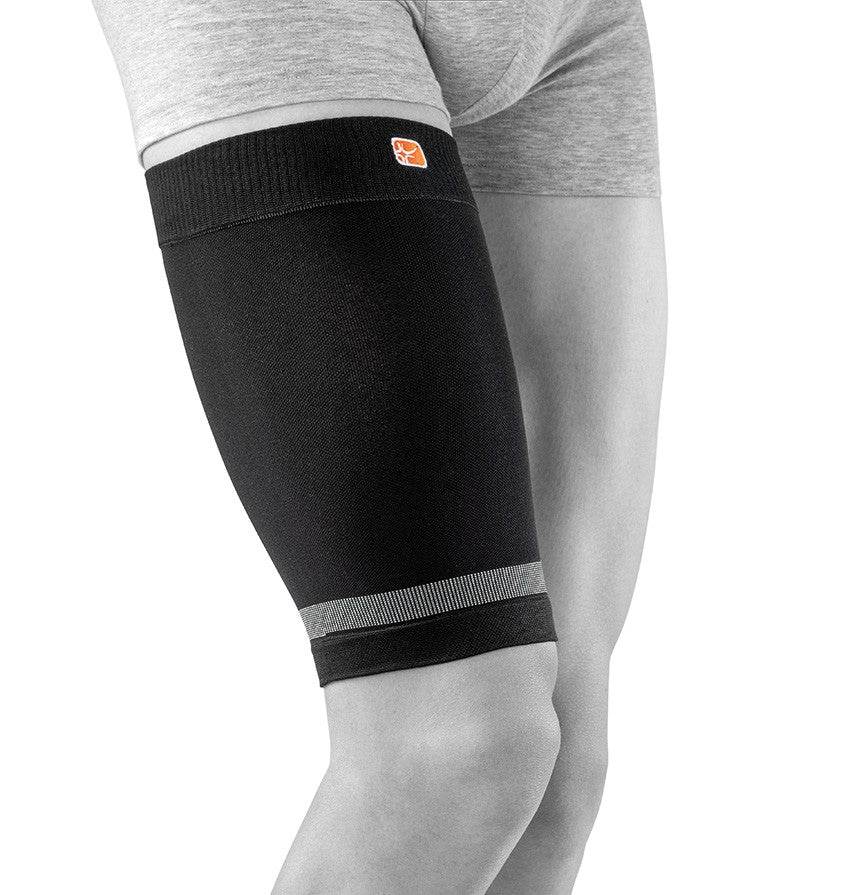A hamstring strain is a common sports injury that often occurs in contact sports such as football, handball or floorball. The injury is caused by a forceful blow to the front of the thigh, leading to bleeding, pain and stiffness in the muscle.
What is a thigh cake?
A hamstring strain is a muscle contusion in the anterior thigh muscle, most often caused by a direct blow from, for example, an opponent's knee. The injury leads to local bleeding in the muscle and can make it difficult to put weight on the leg. With repeated injuries, scar tissue can form, which increases the risk of recurring problems and in some cases ossification of the muscle.
Common causes & risk factors
A hamstring strain almost always occurs when there is direct force to the thigh, common in intense contact sports involving close combat. The risk increases with inadequate protection, previous injuries to the same area, and repeated blows that lead to scar tissue and impaired muscle function.
Symptom
- Immediate pain at the time of injury
- Swelling and bruising on the front of the thigh
- Stiffness and reduced mobility in the thigh
- Pain during exertion and muscle activation
-
Sometimes long-term soreness and recurring problems with repeated injuries
When should you seek medical attention?
If the pain is severe, you have difficulty walking, or if the swelling and bruising do not improve within a few days, you should contact your healthcare provider. If you suspect ossification of the muscle, medical evaluation is required.
Recommended protection & support
In acute conditions, compression, cold and elevation are important measures to limit bleeding and swelling. Once the acute phase has subsided, warming thigh protection can be used to increase blood circulation, reduce stiffness and provide support to the muscle. Warming and compressing thigh protection also helps prevent relapse and facilitates a faster return to activity. Regular stretching and light rehabilitation training help the muscle regain full function.


